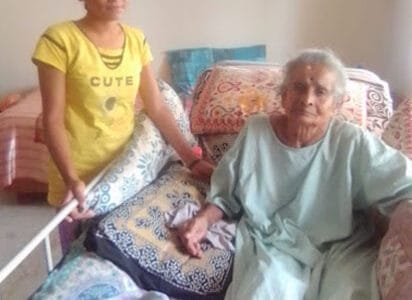How to care 6 early warning signs of stroke that you should not ignore for Senior Citizens
Stroke is a significant medical illness that negatively affects a person’s quality of life and overall health. Early recognition of Stroke warning signs enables an individual to take immediate action to avoid serious consequences.
What are the early signs of stroke?
A stroke can happen to anyone, but recognising the early warning signs can make a huge difference. A stroke occurs when blood flow to part of the brain is interrupted, which can lead to brain damage. As per ICMR, Stroke is the third leading cause of death and the sixth leading cause of disability in India.
The key to minimising this damage is quick action. Some strokes are preceded by transient ischemic attacks (TIAs), also known as “mini-strokes.” These episodes serve as a major warning, and getting help fast can save your life or that of someone you love. Here are six early warning signs to watch out.
Common Symptoms of Stroke: Think F.A.S.T.
When it comes to stroke, every second counts. The faster a person receives medical help, the better their chances of recovery. A simple way to recognize stroke symptoms is by remembering the F.A.S.T. acronym:
- F – Face Drooping: One side of the face may sag or feel numb. Ask the person to smile; if the smile is uneven, it could be a stroke.
- A – Arm Weakness: One arm may feel weak or numb. Ask them to raise both arms; if one drifts downward, it’s a warning sign.
- S – Speech Difficulty: Slurred or confused speech is a red flag. Ask them to repeat a simple sentence—if they can’t, call for help.
- T – Time to Call Emergency Services: If you notice any of these signs, act immediately and call for medical assistance.
Sudden loss of senses
A stroke may be followed by an abrupt and unexplained loss of vision, hearing, or touch, among other senses. This loss could occur suddenly and could be total or partial. Your sensation of touch may feel abnormally faint or missing, or you may find that you lose the ability to see out of one eye.
Confusion or difficulty understanding speech
Confusion is another typical early-stage indication of stroke. You could find it challenging to understand what people are saying or to put words together. There could be slurred or unintelligible speech. These symptoms are worrisome even if they go away fast, since they may be a TIA, which frequently occurs before a full-blown stroke.
Headaches that have no proper source
Even though there are many causes for headaches, an abrupt, severe headache without a known reason could be a sign of a stroke. This type of headache may occur quickly and feels unlike any other headache you’ve ever experienced. If you are experiencing nausea or dizziness as well, it may be much more evident that you need to get care immediately.
Changes in alertness and senses
Feeling sleepy or having trouble staying awake might be early signs of a stroke, as can a rapid shift in awareness or alertness. A change in your senses, such as tingling or numbness in your limbs, may also occur. Although these symptoms can initially appear to be minor, they can soon get worse, so you shouldn’t ignore them.
Vision problems
Vision issues, such as double vision, blurry vision, or complete loss of vision in one or both eyes, are another common early sign of stroke. One may find it difficult to focus or perceive things as if it is misted over. These sudden, severe vision issues usually point to a problem with the brain’s blood supply.
Memory loss or confusion
Memory issues may indicate a stroke early on, particularly if they coexist with other symptoms. You may experience transient amnesia, find it difficult to remember basic words, or even abruptly forget familiar objects. It’s important to pay attention to these memory gaps as they may represent the brain’s reaction to decreased blood flow.






